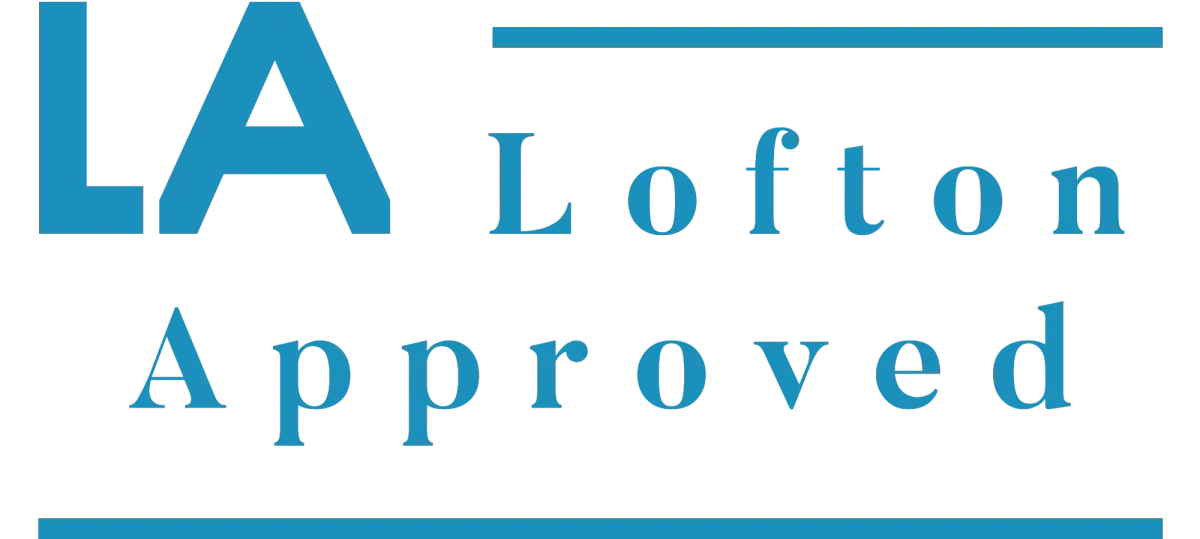Are Your Words Building Your Business or Holding It Back?
And What's It Costing You Every Time
You Don't Say What You Really Mean?
Can I tell you about the $2 million conversation I almost ruined? I was presenting to our biggest potential client, and halfway through, I realized I was talking about what we did instead of what they needed. The room went cold. That's when I learned that communication isn't about being articulate - it's about being understood.

Are Your Words Building Your Business or Holding It Back?

And What's It Costing You Every Time
You Don't Say What You Really Mean?
Can I tell you about the $2 million conversation I almost ruined? I was presenting to our biggest potential client, and halfway through, I realized I was talking about what we did instead of what they needed. The room went cold. That's when I learned that communication isn't about being articulate—it's about being understood.
What Are Your Communication Blind Spots Costing You?
Do people nod in meetings but leave confused about what to do next?
Because you're communicating what you know instead of what they need to understand. You're speaking from your perspective instead of translating to theirs. Clear communication isn't about saying more - it's about saying the right things in the right way.
Why do your great ideas die in committee while mediocre ones get approved?
Because influence isn't about having the best ideas - it's about presenting ideas in ways that make people want to act. You're focusing on logic when you need to connect with emotions and motivations.
Do you avoid difficult conversations until they become bigger problems?
Because no one taught you that difficult conversations are actually gifts. They're opportunities to solve problems before they become crises. The longer you wait, the harder and more expensive the conversation becomes.
Why don't people take you seriously even when you're the expert in the room?
Because expertise without executive presence is just information. People follow confident communicators, not just knowledgeable ones. Your words need to match your authority.
Do you dread high-stakes presentations because you never know if you're connecting?
Because you're performing instead of communicating. Great presentations aren't about perfect delivery - they're about genuine connection. When you focus on serving your audience instead of impressing them, everything changes.
Your communication skills aren't just nice-to-have soft skills. They're the multiplier that makes everything else you do more effective - or less effective.
What Are Your Communication Blind Spots Costing You?
Do people nod in meetings but leave confused about what to do next?
Because you're communicating what you know instead of what they need to understand. You're speaking from your perspective instead of translating to theirs. Clear communication isn't about saying more—it's about saying the right things in the right way.
Why do your great ideas die in committee while mediocre ones get approved?
Because influence isn't about having the best ideas—it's about presenting ideas in ways that make people want to act. You're focusing on logic when you need to connect with emotions and motivations.
Do you avoid difficult conversations until they become bigger problems?
Because no one taught you that difficult conversations are actually gifts. They're opportunities to solve problems before they become crises. The longer you wait, the harder and more expensive the conversation becomes.
Why don't people take you seriously even when you're the expert in the room?
Because expertise without executive presence is just information. People follow confident communicators, not just knowledgeable ones. Your words need to match your authority.
Do you dread high-stakes presentations because you never know if you're connecting?
Because you're performing instead of communicating. Great presentations aren't about perfect delivery—they're about genuine connection. When you focus on serving your audience instead of impressing them, everything changes.
Your communication skills aren't just nice-to-have soft skills. They're the multiplier that makes everything else you do more effective—or less effective.
The Presentation That Changed How I Think About Communication

Epic Failure
I'll never forget the presentation that should have been my shining moment. I was presenting our division's strategic plan to the executive board—months of work, brilliant analysis, perfect PowerPoint slides.
Fifteen minutes in, I could see their eyes glazing over. By the end, they had more questions than answers. The plan was rejected, not because it was wrong, but because I couldn't communicate why it mattered.
Painful Realization
That failure forced me to confront a hard truth: I was a Subject Matter Expert, a Data Analyst, and a Strategic Thinker, but I wasn't a Communicator. I could create brilliant strategies, but I couldn't get people to care about them.
I realized that in business, being right isn't enough. Being clear isn't enough. You have to be compelling.
Communication Revolution
I started studying how great leaders communicate differently. It wasn't about charisma or natural talent - it was about understanding that every conversation has a purpose, every presentation serves an audience, and every difficult conversation is an opportunity to strengthen relationships.
Six months later, I presented an even more complex plan to the same board. This time, I didn't just explain what we should do - I helped them understand why it mattered to them. The plan was approved unanimously.
That experience taught me that communication isn't about perfection - it's about connection. And connection is a skill you can learn.
The Presentation That Changed How I Think About Communication

Epic Failure
I'll never forget the presentation that should have been my shining moment. I was presenting our division's strategic plan to the executive board—months of work, brilliant analysis, perfect PowerPoint slides.
Fifteen minutes in, I could see their eyes glazing over. By the end, they had more questions than answers. The plan was rejected, not because it was wrong, but because I couldn't communicate why it mattered.
Painful Realization
That failure forced me to confront a hard truth: I was a Subject Matter Expert, a Data Analyst, and a Strategic Thinker, but I wasn't a Communicator. I could create brilliant strategies, but I couldn't get people to care about them.
I realized that in business, being right isn't enough. Being clear isn't enough. You have to be compelling.
Communication Revolution
I started studying how great leaders communicate differently. It wasn't about charisma or natural talent - it was about understanding that every conversation has a purpose, every presentation serves an audience, and every difficult conversation is an opportunity to strengthen relationships.
Six months later, I presented an even more complex plan to the same board. This time, I didn't just explain what we should do - I helped them understand why it mattered to them. The plan was approved unanimously.
That experience taught me that communication isn't about perfection - it's about connection. And connection is a skill you can learn.
The Communication Mastery System™: How We Build Leaders People Actually Want to Follow
Pillar 1:
The Clarity Foundation
Saying What You Mean So People Understand What You Need
Most communication problems aren't communication problems - they're clarity problems. We teach you how to organize your thoughts before you speak and structure your messages so people can't misunderstand them.
What We Develop:
Message structure frameworks, audience analysis techniques, clarity testing methods, and feedback loops that ensure your intent matches their understanding.
Real Application:
Instead of saying 'We need to improve customer satisfaction,' you'll learn to say 'By March 31st, we need to increase our customer satisfaction scores from 7.2 to 8.5 by implementing these three specific improvements to our service process.
Pillar 2:
The Influence Engine
Moving People to Action Through Authentic Persuasion
Influence isn't manipulation - it's the ability to help people see why your ideas serve their interests. We teach you how to present ideas in ways that make people want to say yes.
Influence Skills:
Stakeholder motivation mapping, benefit translation, objection anticipation, consensus building, and decision-making facilitation.
Success Example:
Client transformed from having 30% of his proposals accepted to 85% acceptance rate by learning to present solutions in terms of client outcomes instead of product features.
Pillar 3:
The Difficult Conversation Framework
Turning Conflicts Into Collaborations
Difficult conversations don't have to be difficult. They become difficult when we avoid them until they become explosive. We teach you how to address problems while they're still problems, not crises.
Conversation Skills:
Issue framing, emotion management, solution finding, relationship preservation, and follow-up accountability.
Client Impact:
Manager who used to avoid performance conversations for months learned to address issues within days, resulting in 60% improvement in team performance and 40% reduction in employee turnover.
Pillar 4:
The Executive Presence Protocol
Commanding Attention and Respect Without Demanding It
Executive presence isn't about being the loudest voice in the room—it's about being the voice people listen to when you speak. We develop your ability to communicate with authority, confidence, and authenticity.
Presence Elements:
Vocal authority, physical confidence, mental clarity, emotional intelligence, and authentic leadership communication.
Transformation:
Newly promoted director went from being ignored in executive meetings to being asked to lead strategic initiatives after developing strong executive presence skills.
Pillar 5:
The Presentation Mastery Method
Delivering Messages That Move People to Action
Great presentations don't just inform - they transform. We teach you how to design and deliver presentations that create genuine engagement and drive real results.
Mastery Components:
Audience connection techniques, story-driven content, visual design principles, delivery confidence, and action-oriented conclusions.
Real Outcome:
CEO who dreaded investor presentations learned to connect authentically with stakeholders, resulting in successful Series B funding round and board praise for communication excellence.
Your communication skills aren't just nice-to-have soft skills. They're the multiplier that makes everything else you do more effective - or less effective.
The Communication Mastery System: How We Build Leaders People Actually Want to Follow
Pillar 1:
The Clarity Foundation
Saying What You Mean So People Understand What You Need
Most communication problems aren't communication problems—they're clarity problems. We teach you how to organize your thoughts before you speak and structure your messages so people can't misunderstand them.
What We Develop:
Message structure frameworks, audience analysis techniques, clarity testing methods, and feedback loops that ensure your intent matches their understanding.
Real Application:
Instead of saying 'We need to improve customer satisfaction,' you'll learn to say 'By March 31st, we need to increase our customer satisfaction scores from 7.2 to 8.5 by implementing these three specific improvements to our service process.
Pillar 2:
The Influence Engine
Moving People to Action Through Authentic Persuasion
Influence isn't manipulation—it's the ability to help people see why your ideas serve their interests. We teach you how to present ideas in ways that make people want to say yes.
Influence Skills:
Stakeholder motivation mapping, benefit translation, objection anticipation, consensus building, and decision-making facilitation.
Success Example:
Client transformed from having 30% of his proposals accepted to 85% acceptance rate by learning to present solutions in terms of client outcomes instead of product features.
Pillar 3:
The Difficult Conversation Framework
Turning Conflicts Into Collaborations
Difficult conversations don't have to be difficult. They become difficult when we avoid them until they become explosive. We teach you how to address problems while they're still problems, not crises.
Conversation Skills:
Issue framing, emotion management, solution finding, relationship preservation, and follow-up accountability.
Client Impact:
Manager who used to avoid performance conversations for months learned to address issues within days, resulting in 60% improvement in team performance and 40% reduction in employee turnover.
Pillar 4:
The Executive Presence Protocol
Commanding Attention and Respect Without Demanding It
Executive presence isn't about being the loudest voice in the room—it's about being the voice people listen to when you speak. We develop your ability to communicate with authority, confidence, and authenticity.
Presence Elements:
Vocal authority, physical confidence, mental clarity, emotional intelligence, and authentic leadership communication.
Transformation:
Newly promoted director went from being ignored in executive meetings to being asked to lead strategic initiatives after developing strong executive presence skills.
Pillar 5:
The Presentation Mastery Method
Delivering Messages That Move People to Action
Great presentations don't just inform - they transform. We teach you how to design and deliver presentations that create genuine engagement and drive real results.
Mastery Components:
Audience connection techniques, story-driven content, visual design principles, delivery confidence, and action-oriented conclusions.
Real Outcome:
CEO who dreaded investor presentations learned to connect authentically with stakeholders, resulting in successful Series B funding round and board praise for communication excellence.
Your communication skills aren't just nice-to-have soft skills. They're the multiplier that makes everything else you do more effective - or less effective.
What's Your Communication Style Costing You?
The Data Dumper
You provide too much information and lose your audience in the details"
Cost:
"People tune out before you get to your point"
Solution:
"Learn to lead with conclusions and support with data
The Conflict Avoider
You hint at problems instead of addressing them directly"
Cost:
"Small issues become big problems while you're being 'nice'"
Solution:
"Master the art of direct, respectful communication
The Assumption Maker
You assume people understand your perspective without explanation"
Cost:
"Confusion, misalignment, and frustrated stakeholders"
Solution:
"Develop audience awareness and context setting
The Perfectionist Presenter
You over-prepare presentations but under-connect with audiences"
Cost:
"Perfect slides that don't create action or engagement"
Solution:
"Focus on connection and impact over perfection
Most communication problems come from using one style for every situation. Great communicators adapt their approach to their audience and purpose.
What's Your Communication Style Costing You?
The Data Dumper
You provide too much information and lose your audience in the details"
Cost:
"People tune out before you get to your point"
Solution:
"Learn to lead with conclusions and support with data
The Conflict Avoider
You hint at problems instead of addressing them directly"
Cost:
"Small issues become big problems while you're being 'nice'"
Solution:
"Master the art of direct, respectful communication
The Assumption Maker
You assume people understand your perspective without explanation"
Cost:
"Confusion, misalignment, and frustrated stakeholders"
Solution:
"Develop audience awareness and context setting
The Perfectionist Presenter
You over-prepare presentations but under-connect with audiences"
Cost:
"Perfect slides that don't create action or engagement"
Solution:
"Focus on connection and impact over perfection
Most communication problems come from using one style for every situation. Great communicators adapt their approach to their audience and purpose.
Why Communication Coaching Goes Deeper Than Presentation Training
Traditional Presentation Training
Focus on delivery techniques and slide design
Emphasis on eliminating nervousness and speaking smoothly
Generic frameworks and templates
Success measured by confident delivery
Covers formal presentations only
Lofton Approved Communication Coaching
Focus on authentic connection and influence
Emphasis on understanding audiences and driving results
Custom approaches for your specific communication challenges
Success measured by business outcomes and relationship strength
Covers all forms of business communication
Presentation training teaches you to speak well. Communication coaching teaches you to be heard, understood, and followed. There's a huge difference.
Why Communication Coaching Goes Deeper Than
Presentation Training
Traditional Presentation Training
Focus on delivery techniques and slide design
Emphasis on eliminating nervousness and speaking smoothly
Generic frameworks and templates
Success measured by confident delivery
Covers formal presentations only
Lofton Approved
Communication Coaching
Focus on authentic connection and influence
Emphasis on understanding audiences and driving results
Custom approaches for your specific communication challenges
Success measured by business outcomes and relationship strength
Covers all forms of business communication
Presentation training teaches you to speak well. Communication coaching teaches you to be heard, understood, and followed. There's a huge difference.
Are You Ready to Transform How People Hear You?
You're Ready for Communication Coaching If
Your career depends on influencing others
You lead meetings, presentations, or client conversations
You want to turn difficult conversations into productive discussions
You're willing to practice new approaches consistently
You understand that communication skills drive business results
You're open to feedback about your current communication style
You're Not Ready If:
You think your communication is already perfect
You're not willing to step outside your comfort zone
You want quick fixes without skill development
You don't interact with people regularly in your role
You're not open to changing your communication approach
Communication coaching requires you to become conscious of habits you've developed over decades.
It's not always comfortable, but it's always worthwhile if you're serious about your leadership impact.
Are You Ready to Transform How People Hear You?
You're Ready for Communication Coaching If:
Your career depends on influencing others
You lead meetings, presentations, or client conversations
You want to turn difficult conversations into productive discussions
You're willing to practice new approaches consistently
You understand that communication skills drive business results
You're open to feedback about your current communication style
You're Not Ready If:
You think your communication is already perfect
You're not willing to step outside your comfort zone
You want quick fixes without skill development
You don't interact with people regularly in your role
You're not open to changing your communication approach
Communication coaching requires you to become conscious of habits you've developed over decades.
It's not always comfortable, but it's always worthwhile if you're serious about your leadership impact.
What It's Worth to Be Heard, Understood, and Followed
Consider this: What's one promotion worth? What's the value of winning that big proposal? What's it worth to resolve conflicts quickly instead of letting them fester? Strong communication skills pay dividends for your entire career.
Our communication coaching clients report an average career impact worth 3-10x their coaching investment through promotions, successful negotiations, and improved relationships.
60-85% improvement
in presentation effectiveness
70% reduction
in conflict resolution time
45% increase
in proposal/idea acceptance rates
80% improvement
in team communication clarity
What It's Worth to Be Heard, Understood, and Followed
Consider this: What's one promotion worth? What's the value of winning that big proposal? What's it worth to resolve conflicts quickly instead of letting them fester? Strong communication skills pay dividends for your entire career.
Our communication coaching clients report an average career impact worth 3-10x their coaching investment through promotions, successful negotiations, and improved relationships.
60-85% improvement
in presentation effectiveness
70% reduction
in conflict resolution time
45% increase
in proposal/idea acceptance rates
80% improvement
in team communication clarity
Frequently Asked Questions
What is communication coaching and how does it help business leaders?
Communication coaching helps leaders improve clarity, influence, and presence in conversations, meetings, and presentations. At Lofton Approved, we focus on real-world situations so you can lead with confidence, win buy-in, and strengthen relationships.
How is Lofton Approved communication coaching different from public speaking training?
Public speaking focuses on presentations, while communication coaching addresses all aspects of leadership communication—difficult conversations, team alignment, executive presence, and persuasive messaging that drives results.
Who benefits most from communication coaching?
Executives, business owners, entrepreneurs, and sales professionals who want to influence others, handle conflict effectively, and become leaders people actually want to follow.
What kinds of communication challenges do you help with?
We address unclear messaging, ineffective presentations, low team engagement, unresolved conflicts, weak executive presence, and difficulties influencing stakeholders.
How quickly can I see results from communication coaching?
Most clients notice measurable improvements in clarity, confidence, and influence within 4–6 weeks of consistent coaching. Larger transformations typically occur over 3–6 months.
Do you work with teams as well as individuals?
Yes. We provide both one-on-one coaching for leaders and customized team workshops to strengthen organizational communication and collaboration.
Can communication coaching help me with executive presence?
Absolutely. Executive presence is one of our core focus areas. We’ll help you command attention and respect without being the loudest voice in the room.
What results have clients achieved with communication coaching?
Clients report 60–85% improvement in presentation effectiveness, 70% faster conflict resolution, and significantly higher success rates in proposals, negotiations, and team alignment.
Ready to Finally Be Heard the Way You Deserve?
You have brilliant ideas. You have valuable insights. You have solutions that could change everything. But if you can't communicate them in ways that move people to action, they're just thoughts in your head.
Stop letting poor communication be the bottleneck to your influence.
Your ideas deserve to be heard. Your leadership deserves to be followed."
Complimentary Communication Style Assessment - discover what's limiting your influence and how to fix it.
Ready to Finally Be Heard the Way You Deserve?
You have brilliant ideas. You have valuable insights. You have solutions that could change everything. But if you can't communicate them in ways that move people to action, they're just thoughts in your head.
Stop letting poor communication be the bottleneck to your influence.
Your ideas deserve to be heard. Your leadership deserves to be followed."
Complimentary Communication Style Assessment - discover what's limiting your influence and how to fix it.
Coppyright 2025 | Privacy Policy | Terms & Conditions | Cookie Policy






